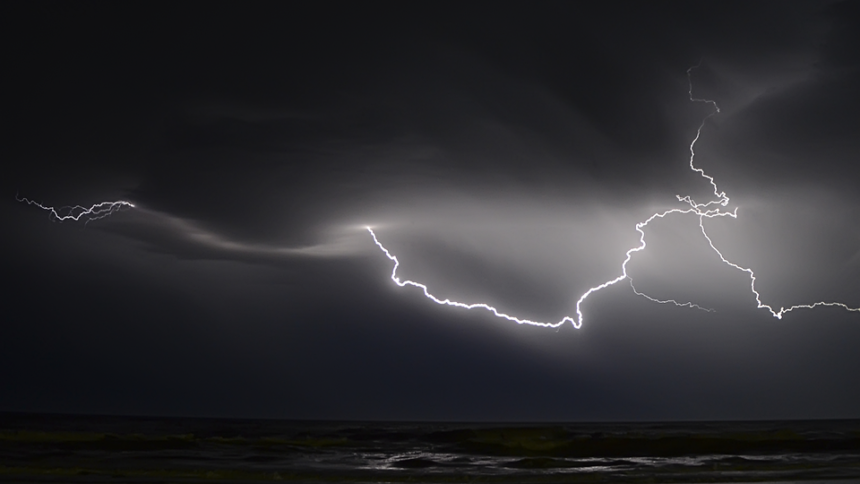Droughts and Deluges: A Look at This Season’s Weather Predictions
As the seasons shift and the atmosphere undergoes its complex dance, meteorologists and climatologists are bracing for what might be an unpredictable weather cycle this year. With a troubling combination of droughts and deluges looming on the horizon, understanding the science behind these phenomena becomes indispensable for farmers, policymakers, and everyday citizens.
The Warming Effect
One of the key drivers behind this season’s extreme weather predictions is climate change. As global temperatures rise, the atmosphere can hold more moisture, leading to heavier rainfall events. Concurrently, higher temperatures can accelerate evaporation rates, contributing to drought conditions in regions that are already water-stressed. The interplay of these two forces has resulted in an unsettling combination of both droughts and deluges across various regions.
Drought Conditions
According to recent forecasts, several areas—especially the Western United States, Southern Europe, and parts of Australia—are experiencing potential drought conditions. These regions are already grappling with water scarcity, which has dire implications for agriculture, water supply, and ecosystem health. Crop yields could suffer, leading to increased food prices and economic instability. Communities relying on consistent water sources for daily needs could face shortages, prompting necessary policymaking interventions.
Moreover, prolonged drought can exacerbate wildfires. In the U.S., especially in states like California and Oregon, the combination of dry conditions and high temperatures poses a significant threat to natural habitats, homes, and lives. The cycle of drought can create conditions ripe for fire, and as we have seen in recent years, the consequences can be devastating.
The Flip Side: Deluges
While some areas face severe drought, other regions are preparing for the opposite: excessive rainfall and flooding. Areas like Eastern North America, parts of Southeast Asia, and Northern Europe have been flagged for potential deluge scenarios. The phenomenon of "atmospheric rivers"—large volumes of moisture transported through the atmosphere—may lead to intense rainfall in short periods, overwhelming drainage systems and leading to flash floods.
Flooding poses immediate risks to infrastructure, health, and safety. Communities may find roads impassable, homes submerged, and critical services interrupted. Beyond the immediate impact, recovery from flooding can take years, stressing local economies and displacing thousands.
The Fine Balance: Predictive Models
As meteorological science advances, so too does our ability to forecast these phenomena. Advanced climate models incorporating datasets from satellites, ground stations, and historical weather patterns help scientists develop more accurate predictions. However, despite our growing understanding, predictions can still be uncertain due to the chaotic nature of weather systems.
This season, The National Oceanic and Atmospheric Administration (NOAA) and various international agencies have issued seasonal predictions, warning of heightened risks associated with both extreme droughts and heavy rainfall. By using the predictions as part of early warning systems, communities can prepare in advance, helping mitigate the potential impacts of these weather extremes.
Preparing for the Unpredictable
In a world where the lines between drought and deluge can blur, preparedness becomes paramount. Communities vulnerable to drought should consider implementing water conservation practices, investing in more resilient agricultural techniques, and exploring alternative water sources like rainwater harvesting. On the flip side, flood-prone areas must prioritize infrastructure that can withstand heavy rains, employing green infrastructure solutions like permeable pavements and swales to manage excess water.
Additionally, public awareness campaigns can educate citizens on the steps they can take to protect themselves during extreme weather events. These efforts can be crucial in saving lives and livelihoods as our climate continues to evolve.
Conclusion
As we enter this season, with the looming specter of droughts and deluges, it’s clear that the potential for extreme weather is a significant challenge of our time. While we cannot control the weather, we can control our responses. By understanding the implications of these predictions and preparing accordingly, we can navigate this uncertain climate with resilience and adaptability. As we look to the future, the ability to coexist with an increasingly erratic weather pattern will depend on our collective actions today.





![From Underdog to Top Dog: [Team C] Overcomes Challenges to Defeat [Team D] From Underdog to Top Dog: [Team C] Overcomes Challenges to Defeat [Team D]](https://globalnewsweek.icu/wp-content/uploads/2024/10/kiteboarding-6543982_960_720-150x150.jpg)